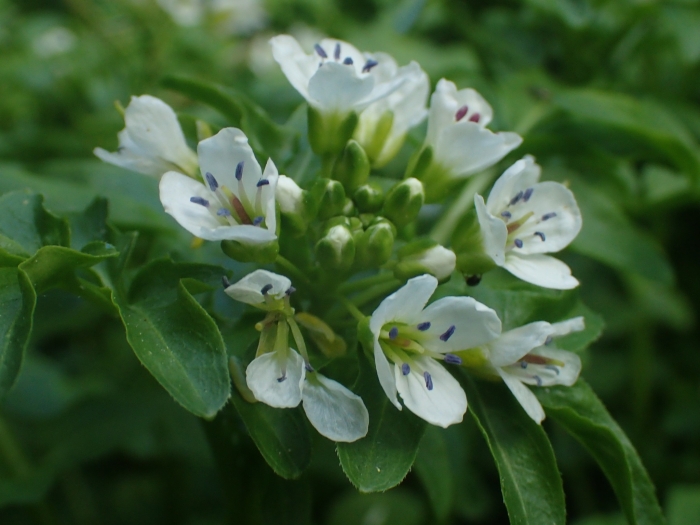Large Bitter-Cress
(Cardamine amara)
Large Bitter-Cress (Cardamine amara)
/
/

Adrien BENOIT à la GUILLAUME
CC BY-SA 4.0
Image By:
Adrien BENOIT à la GUILLAUME
Recorded By:
Copyright:
CC BY-SA 4.0
Copyright Notice:
Photo by: Adrien BENOIT à la GUILLAUME | License Type: CC BY-SA 4.0 | License URL: http://creativecommons.org/licenses/by-sa/4.0/ | Rights Holder: Adrien BENOIT à la GUILLAUME | Publisher: iNaturalist | Date Created: 2021-06-13T11:11:47-07:00 |

















































Estimated Native Range
Summary
Cardamine amara, commonly known as Large Bitter-Cress, is a perennial evergreen herb native to a variety of habitats in Eurasia, including damp woodlands, stream banks, and moist meadows. This species reaches up to 70 cm (28 in) tall with upright, mostly unbranched stems. The leaves are pinnate with three to 13 leaflets, and the plant produces showy clusters of white flowers, occasionally tinged with pink or purple, each petal measuring 8–14 mm (0.3–0.6 in) long. Flowering occurs from late spring to early summer.
Large Bitter-Cress is valued for its early spring blooms and its ability to thrive in moist, shady garden spots. It is often used in naturalistic plantings, around ponds, and in woodland gardens. It prefers consistently moist soil with medium drainage and can tolerate full sun to part shade conditions. While it is not a common culinary herb, it is edible and has a peppery flavor similar to watercress. Gardeners should be aware that it can self-seed prolifically under ideal conditions, potentially becoming weedy.CC BY-SA 4.0
Large Bitter-Cress is valued for its early spring blooms and its ability to thrive in moist, shady garden spots. It is often used in naturalistic plantings, around ponds, and in woodland gardens. It prefers consistently moist soil with medium drainage and can tolerate full sun to part shade conditions. While it is not a common culinary herb, it is edible and has a peppery flavor similar to watercress. Gardeners should be aware that it can self-seed prolifically under ideal conditions, potentially becoming weedy.CC BY-SA 4.0
Plant Description
- Plant Type: Herb
- Height: 2-2.5 feet
- Width: 0.3-0.3 feet
- Growth Rate: Moderate
- Flower Color: White
- Flowering Season: Spring, Summer
- Leaf Retention: Evergreen
Growth Requirements
- Sun: Full Sun, Part Shade
- Water: Medium, High
- Drainage: Medium
Common Uses
Bee Garden, Butterfly Garden, Deer Resistant, Edible*Disclaimer: Easyscape's listed plant edibility is for informational use. Always verify the safety and proper identification of any plant before consumption., Low Maintenance, Water Garden
Natural Habitat
Damp woodlands, stream banks, and moist meadows
Other Names
Common Names: Vandkarse, Bitteres Schaumkraut, Purolitukka, Cardamine Amère, Bekkekarse, Bittere Veldkers, Bäckbräsma
Scientific Names: , Cardamine amara, Cardamine amporitana, Cardamine macrophylla, Cardamine opicii, Cardamine opizii, Cardamine amara var. erubescens, Cardamine libertiana, Cardamine hirta, Cardamine umbrosa
GBIF Accepted Name: Cardamine amara L.